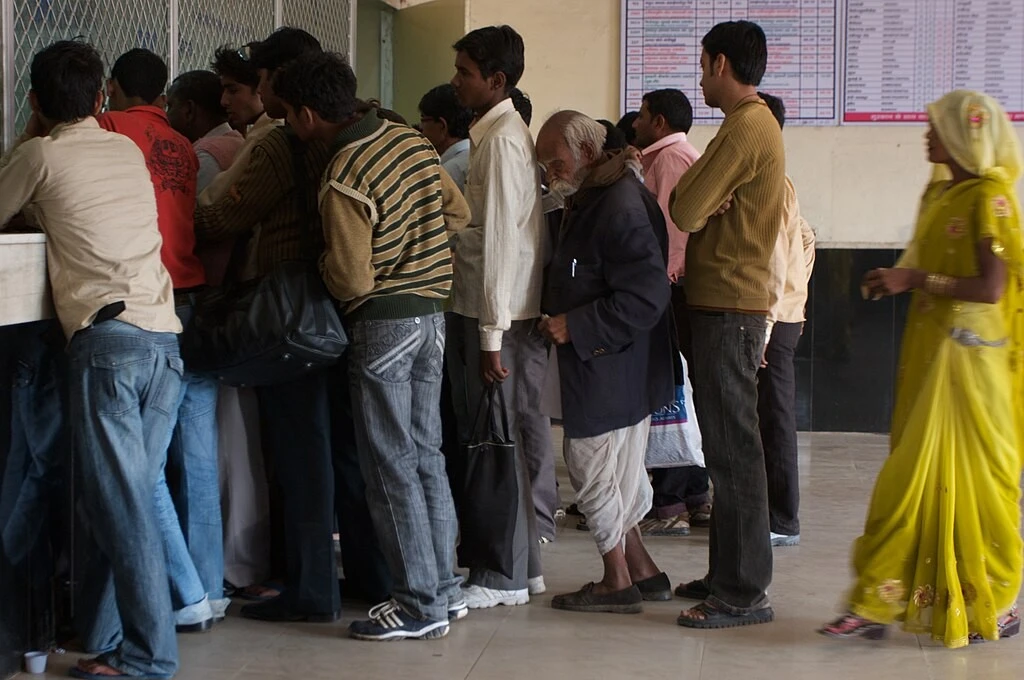India, like most developing countries, is no stranger to the persistence of informal employment, described as all work that is not adequately registered, regulated, or protected by legal frameworks. It covers a plethora of employment arrangements, including those involving daily wagers such as agricultural workers, self-employed persons such as hawkers, and even contractual labour.
Estimates suggest that more than 90 percent of employment in India is informal. People joining the labour force will only increase over this decade, and if the trend persists, so will those engaged in informal employment. This is a serious cause of concern, as informal workers face several precarities—exploitation in wage payments, hazardous working conditions, limited access to social security—all without adequate legal protection. Naturally, there is a focus on reducing informality, both in policy responses and multilateral action, by agencies such as the International Labour Organization (ILO).
However, the characteristics and precariousness of informality are also prevalent in several forms of employment in the formal sector, including within key government programmes, many of which are dominated by women. One such example is that of accredited social health activists (ASHAs).
Understanding ‘informal’ care work by ASHAs
ASHAs are female community health workers (CHWs), who serve as the first—and sometimes only—point of contact between grassroots communities and the public health system. Drawn from the community, they are trained to perform functions including spreading awareness, facilitating access to healthcare entitlements, and promoting maternal and child health. These functions are often added to in periods of crisis, like the pandemic, or through specific healthcare schemes. For example, ASHA workers are involved in distribution of tablets under the Union Government’s Anemia Mukt Bharat programme. State programmes do this too, an example being Telangana’s KCR Kit scheme, which requires ASHAs to support the distribution of kits to pregnant mothers.
Despite working long hours, ASHAs earn a nominal sum, with no compensation for working overtime.
ASHAs have become indispensable to the public health system, even winning the WHO’s Global Health Leaders Award. Yet, their status as formal workers is contentious. Though counted as workers by statistical arms of the government, they are not treated on par with formal workers in practice. Instead, their employment is better characterised by non-standard forms of employment. Non-standard employment can take various forms, such as outsourced, contractual, daily wage, or volunteer work, and the work by ASHAs comes closest to the last category. Due to this, ASHAs face several deficits in decent work, akin to informal workers. Here are some examples:
1. Working hours
ASHAs were envisaged as part-time workers, operating for only four to five hours a day. However, in rural areas, one ASHA caters to approximately 1,000 people, while in urban areas this number is as high as 2,500 people. Catering to this mammoth population entails a significant investment of time. Functions built on over a period of time, care duties towards the community, record-keeping needs, and, in particular, responsibilities during emergencies like the pandemic mean that ASHAs often spend full days working, without any fixed working hours.
2. Wages
The minimum wage for an ancillary nurse/midwife in Karnataka ranges from INR 12,580 to INR 13,540 per month, while in Himachal Pradesh the minimum wage for a semi-skilled healthcare worker ranges from INR 10,175 to INR 11,100 per month. This is not the case with ASHAs, who, by virtue of being treated as part-time volunteers, are not paid wages but an honorarium with performance-based incentives instead. The amounts paid are well below standards for minimum wages. There are wide state-level variations in the honorarium amounts as well, but reports suggest they are usually not more than a few thousand rupees, with a few thousands more released as incentive-based payments. Therefore, despite working long hours, ASHAs earn a nominal sum, with no compensation for working overtime.

3. Working conditions
ASHAs have repeatedly been let down when it comes to occupational safety and working conditions, having to resort to protests for enforcement of basic rights. During the pandemic, for instance, despite being christened ‘COVID Warriors’, they had to fight for the provision of personal protective equipment. This is not simply a reflection of logistical challenges emerging from the pandemic, but a symptom of larger malaise. Even prior to the pandemic, ASHAs have raised (largely unmet) demands for provision of transport options or allowances. This despite them being field workers who must attend to patients at odd hours, and in potentially unsafe environments.
4. Social security
ASHAs do not fall within the provisions of the Employees’ State Insurance (ESI) and Employees’ Provident Fund (EPF) schemes, a demand for which has been raised by unions. Perhaps the most blatant admission of their informality is their inclusion in the e-Shram programme, which is specifically initiated to create a database for provision of social security to unorganised workers. Though welcome in terms of the protection that it offers, it is puzzling that ASHAs are deemed unorganised, despite being integral to the healthcare system. Similarly, in 2018, the central government passed the ASHA Benefit Package, which extended social insurance cover to eligible ASHAs under two schemes. However, these are public insurance schemes available to citizens at a nominal premium, with the only benefit for ASHAs being that the premium is borne by the government. This is a far cry from the demands of ASHAs. The lack of social security for ASHA workers was further highlighted in 2020, when they staged nationwide protests for extension of medical coverage, payment of arrears, and increase in wages.
Aside from these challenges, ASHAs are women foot soldiers in a society with deep-rooted patriarchal norms. This leads to them facing harassment, and sometimes even violence, from community members. As women, they also have the additional, socially imposed responsibility of caring for their families, which is unpaid work.
Looking at the larger picture
However, this informality is not limited to ASHAs. Several other categories of workers in various government programmes face similar challenges. These include anganwadi workers and mid-day meal workers. The part-time nature of their work is often stated as the reason for this. However, it is well known that these roles are far from part-time. Anganwadi workers, for instance, serve as both healthcare workers and educators, and are often given work well outside their scope, such as administering medication, tracking and surveying widows and persons with disability, and even surveying cattle in some cases.
How can we serve these workers better?
The answer is simple: We must recognise their efforts and formalise their conditions of work.
Formalising their working conditions and wages will allow ASHAs the security they need and enable them to perform their jobs better.
And experience has shown us that it is possible for governments to do so. Take the example of community health workers in Pakistan whose work has been successfully formalised through the efforts of the All Pakistan Lady Health Workers Association. While they still face struggles and delayed payments, their formalisation has had several positive effects. For instance, it has led to an increase in the incomes of women health workers, who often come from economically vulnerable backgrounds. As they are the majority earners in their households, this formalisation has also had positive spillover effects on the education of their children, management of health issues, and the day-to-day running of their households. In India, the Odisha government recently announced that it would regularise contract workers, showing us that formalisation is possible.
It is crucial for policymakers to acknowledge that ASHAs and many such workers perform essential functions at the grassroots level. Formalising their working conditions and wages will allow them the security they need and enable them to perform their jobs better. These are basic entitlements that should be made available both as human rights and within the ILO’s Decent Work Agenda. ASHAs themselves have been demanding this for some time now, and several important stakeholder groups have shown support. The service conditions, wages, and social security for various categories of workers in different government schemes (including ASHAs), for example, was discussed in both the 45th and 46th sessions of the Indian Labour Conference (ILC). Among the recommendations of the 46th ILC was the coverage of ASHAs under ESI and EPF.
In 2020, the Parliamentary Standing Committee on Labour also stated that the work of ASHA and anganwadi workers must be formalised, their wages must be defined instead of following an incentive and honorarium basis, and they should not be treated as honorary workers.
While the fiscal implications of formalising these workers are undoubtedly large, they must be considered long-term investments in healthcare and decent work. As evidenced with the LHWs in Pakistan, formalisation can result in greater public visibility including greater validation and acknowledgement for ASHAS as legitimate workers. Formalising their work will also mean that their care work is better valued, both financially and in society.
—
Know more
- Read this primer on frontline health workers.
- Watch this video to see what a day in the life of ASHAs looks like.
- Read this interview of an ASHA worker who shares how we can reimagine the role of ASHAs in the public health ecosystem.
Do more
- Connect with the authors at anirudhc@pragmadev.in or madhavs@pragmadev.in to learn more about and support their work.






